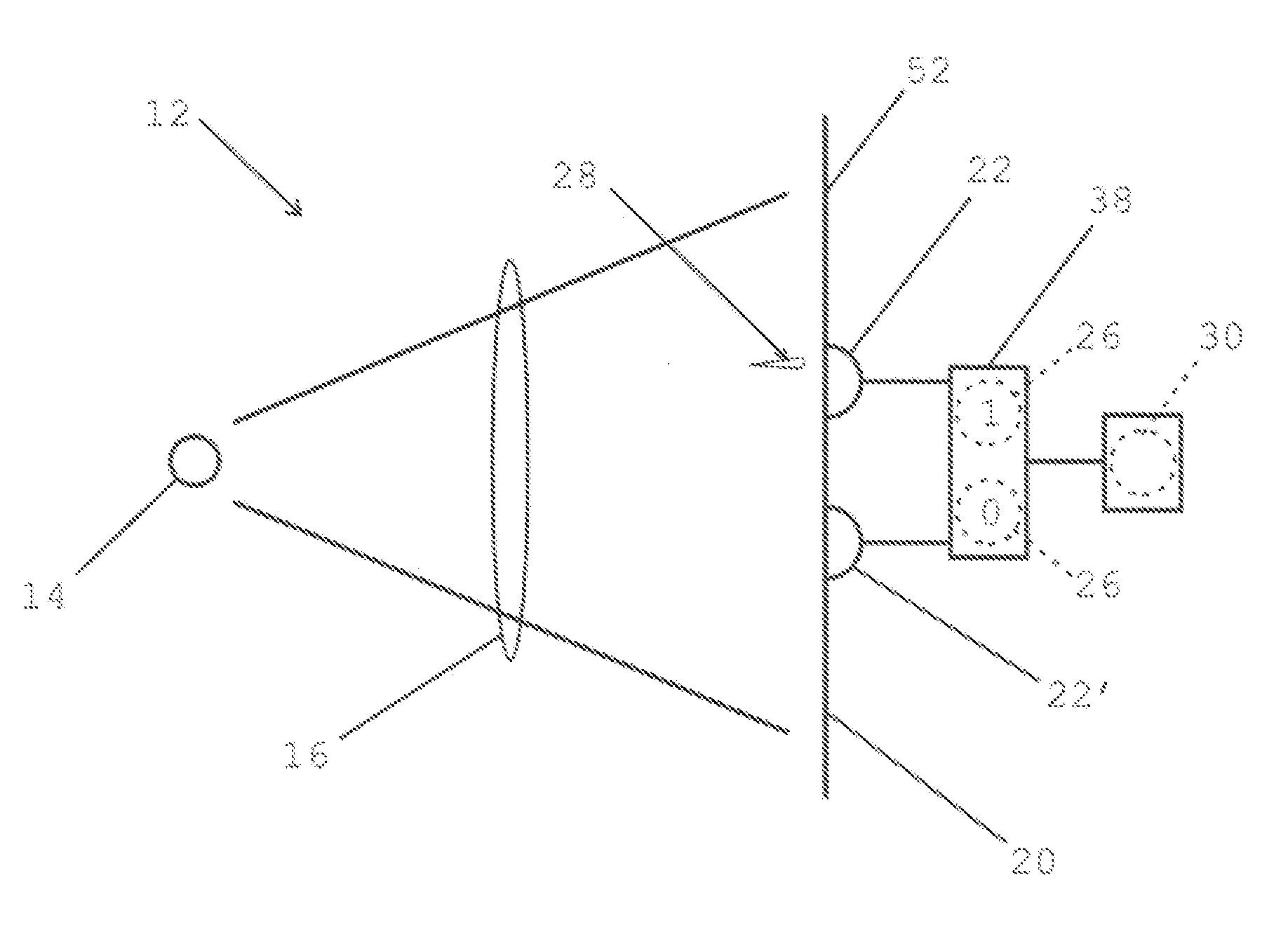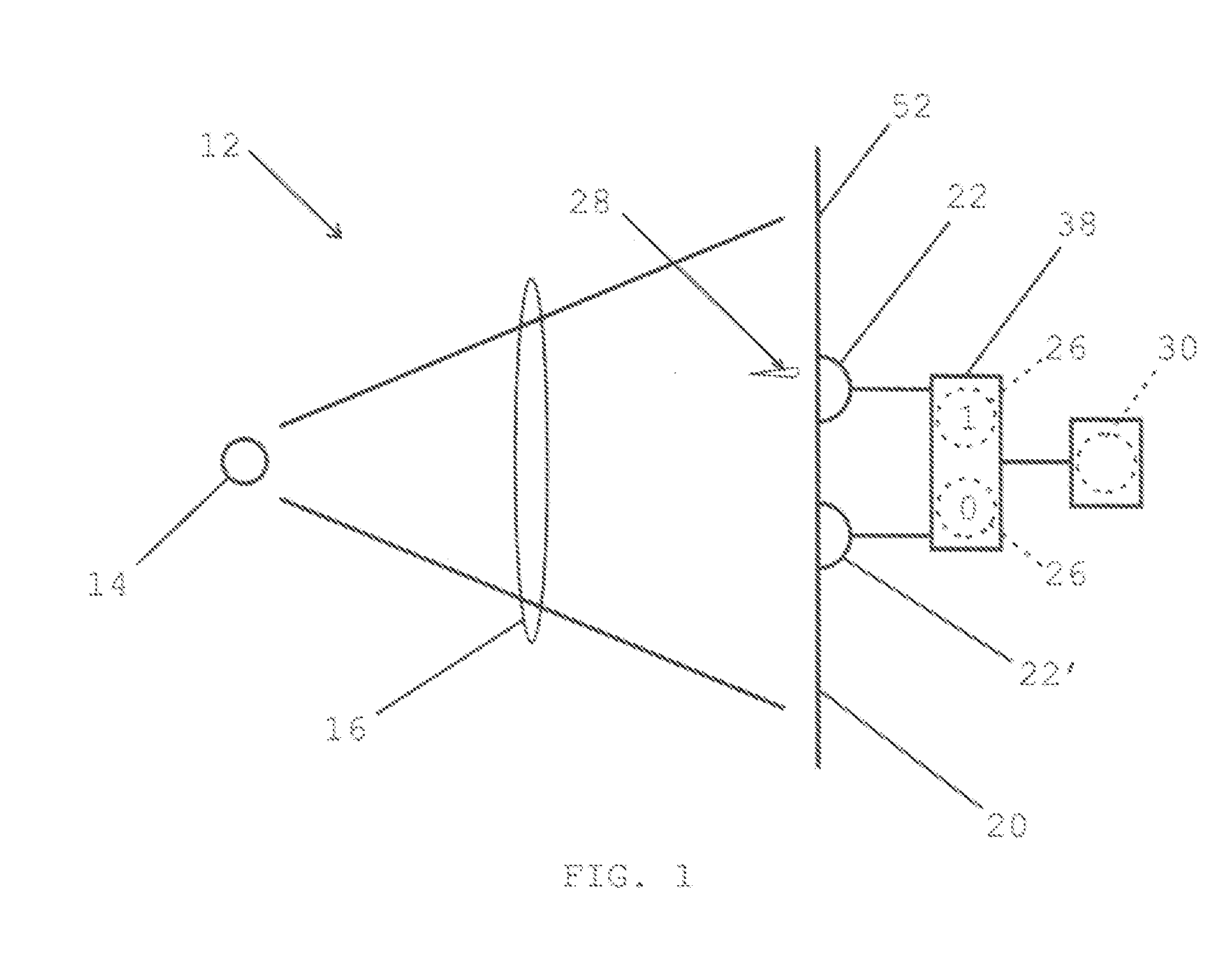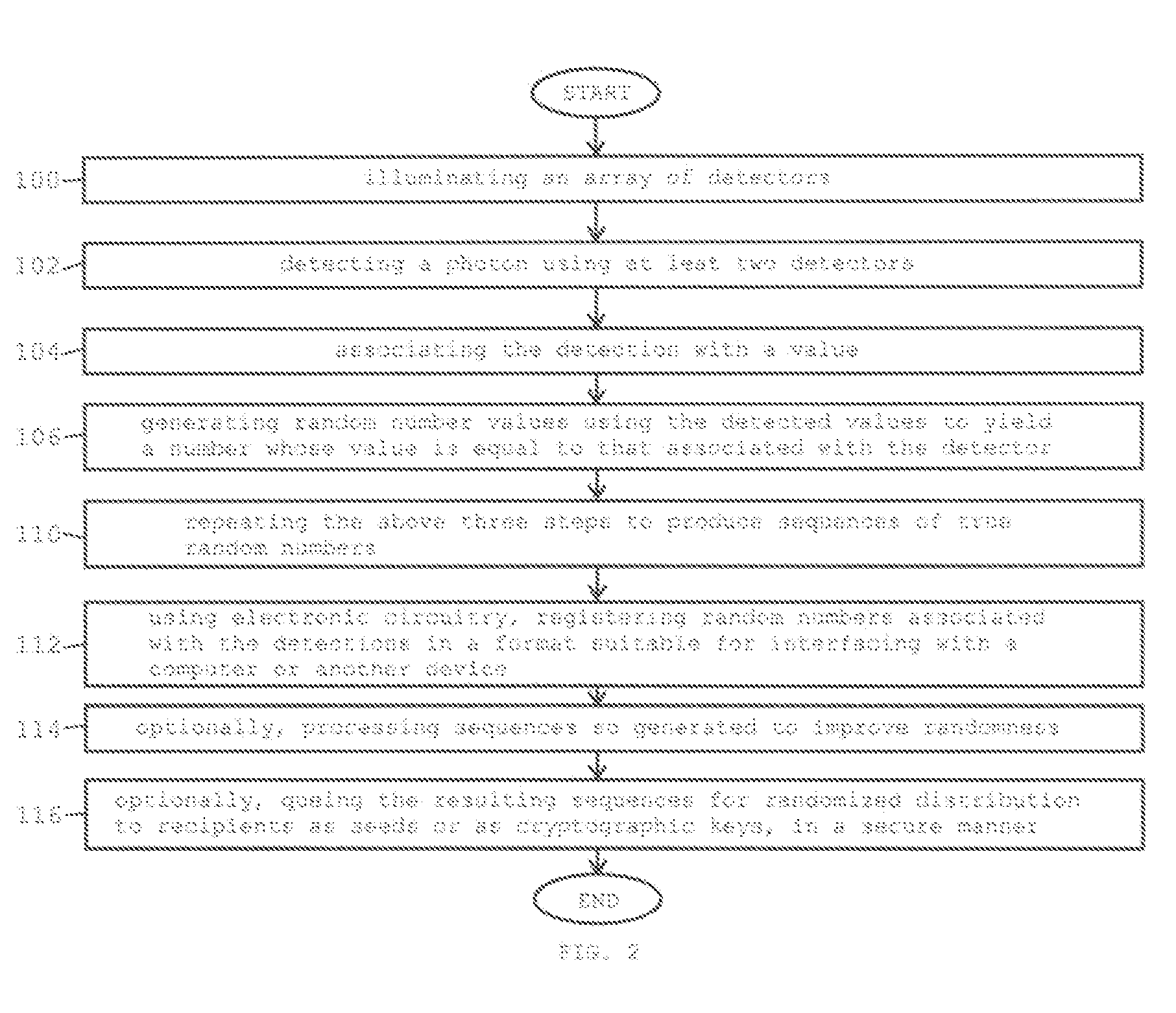Method and apparatus for generating true random numbers by way of a quantum optics process
a quantum optics and process technology, applied in the field of random number generation, can solve the problems of complexity, inability to generate true random numbers, fundamentally inappropriate pseudo-random number generators in cryptography, etc., and achieve the effect of speeding up the process
- Summary
- Abstract
- Description
- Claims
- Application Information
AI Technical Summary
Benefits of technology
Problems solved by technology
Method used
Image
Examples
Embodiment Construction
[0029] Referring to FIGS. 1 and 2, a method 10 and apparatus 12 for generating true random numbers 30 by way of a quantum optics process uses a light source 14 to produce a beam 16 which illuminates an array 20 of detectors 22 and 22′. A detector 22 of the array 20 detects or does not detect a photon 28 to yield a random value 26 (“1” or “1”, for example) which value is equal to that associated with the detector. The detected values 26 are registered by the electronic circuitry 38. This circuitry puts the true random numbers in suitable format for interfacing with a computer or another device and can also comprise a buffer. For example, such random values 26 can be summed or processed to yield processed random number values 30.
[0030] These steps are repeated to produce sequences, such as a binary number 1001001, which itself represents a true random number 30. The randomness of the numbers 30 stems from the transverse spatial distribution 36 of the detection probability of the phot...
PUM
 Login to View More
Login to View More Abstract
Description
Claims
Application Information
 Login to View More
Login to View More - R&D
- Intellectual Property
- Life Sciences
- Materials
- Tech Scout
- Unparalleled Data Quality
- Higher Quality Content
- 60% Fewer Hallucinations
Browse by: Latest US Patents, China's latest patents, Technical Efficacy Thesaurus, Application Domain, Technology Topic, Popular Technical Reports.
© 2025 PatSnap. All rights reserved.Legal|Privacy policy|Modern Slavery Act Transparency Statement|Sitemap|About US| Contact US: help@patsnap.com



